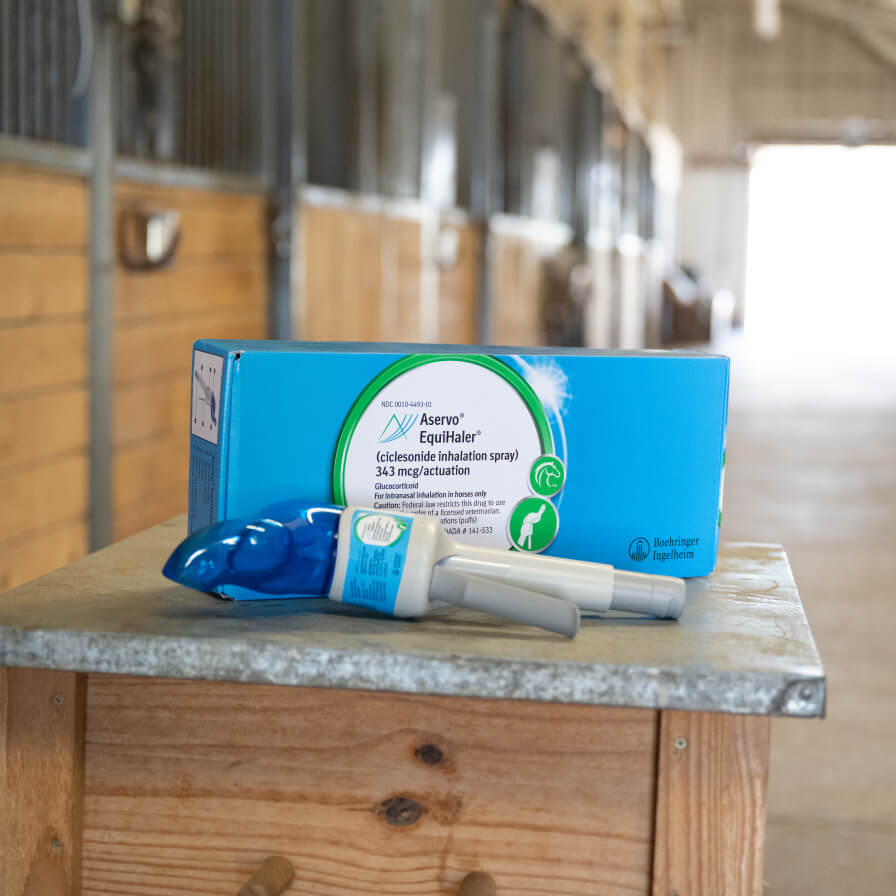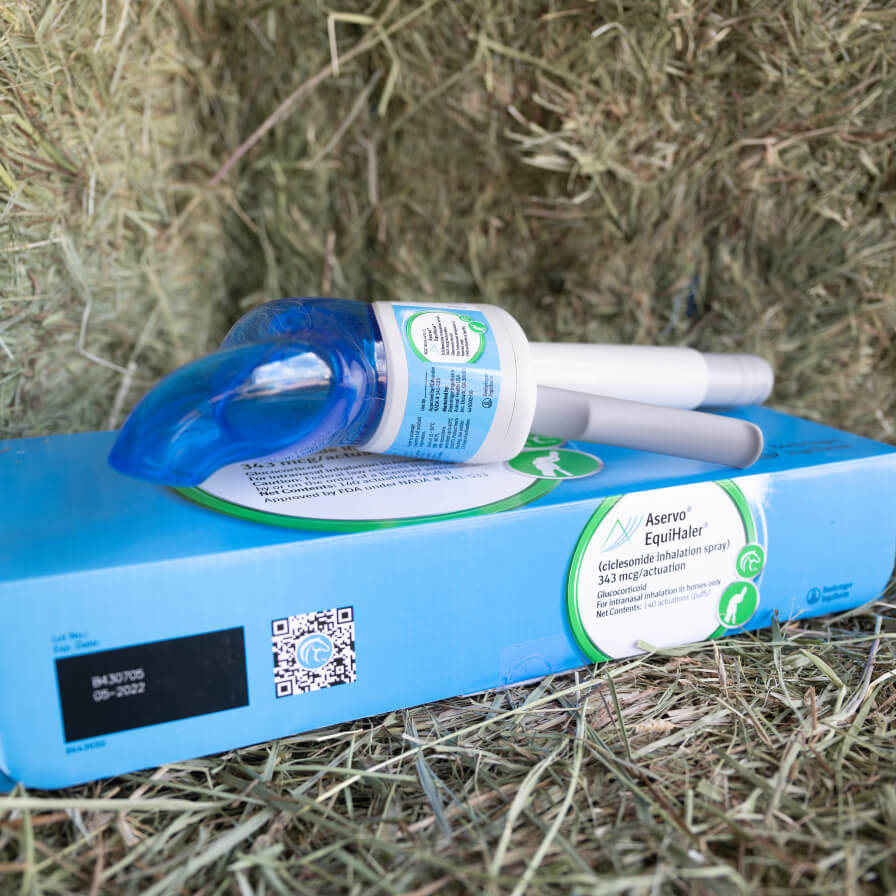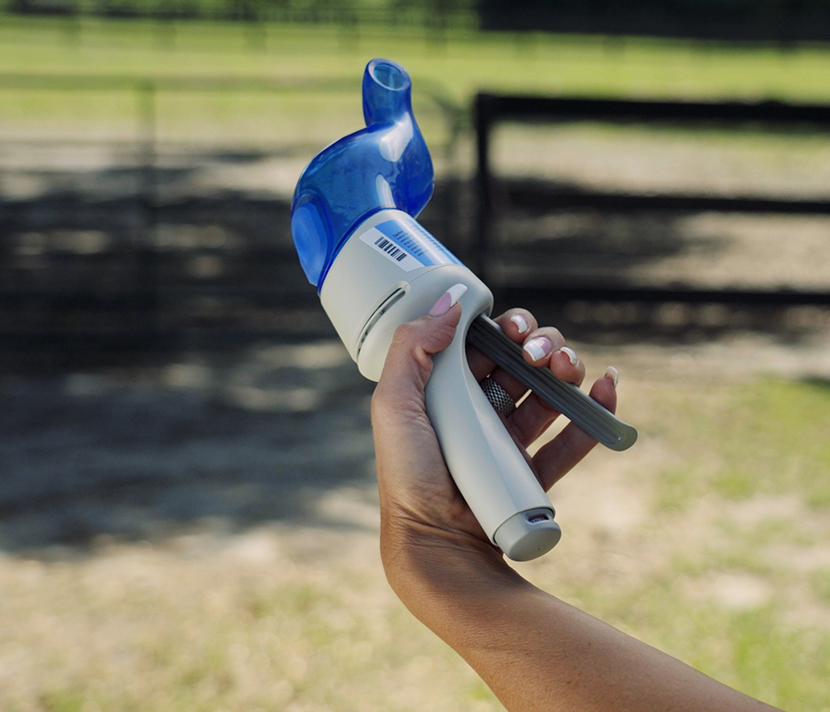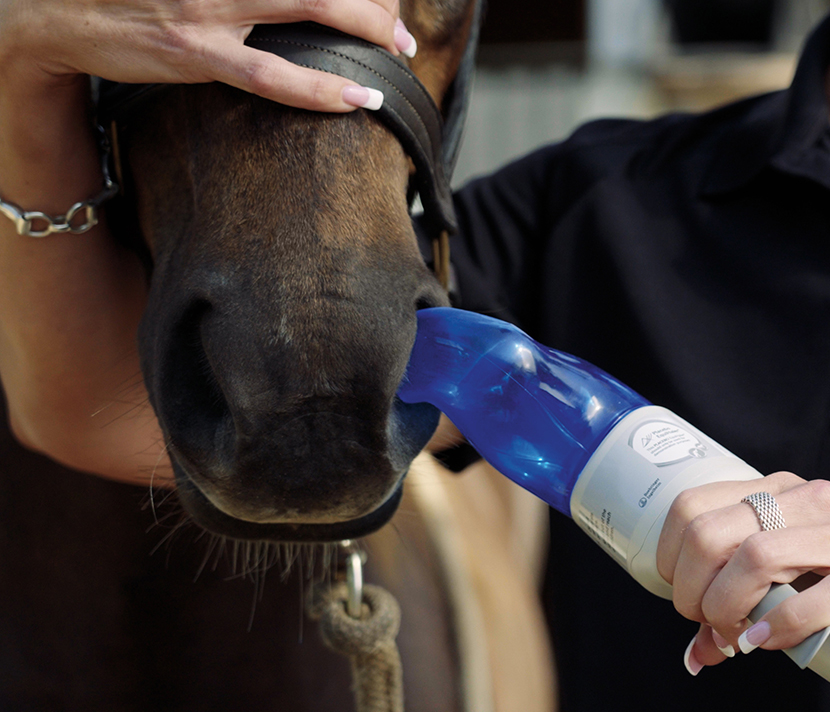IMPORTANT SAFETY INFORMATION: ASERVO EQUIHALER has not been evaluated in pregnant or lactating mares. In a large clinical field study, the most common adverse reactions reported were coughing, nasal discharge, sneezing, and nasal irritation/bleeding. Administration of corticosteroids may worsen existing bacterial, fungal, or viral infection. Glucocorticoids should be used with caution in horses with a history of laminitis, or at a higher risk for laminitis. Not for use in humans. Keep this and all medications out of the reach of children. In case of accidental inhalation, seek medical advice immediately. People with known hypersensitivity to ciclesonide should avoid contact with this product.
Top Reasons to Choose
ASERVO EQUIHALER
Severe equine asthma is a lung problem. Why send treatment anywhere else?
ASERVO EQUIHALER sends targeted treatment right to the lungs to help horses
breathe easy.
How ASERVO EQUIHALER Works
The ASERVO EQUIHALER delivers ciclesonide deep into the horse’s lungs using Soft MistTM technology, which is easy for the horse to inhale. The medication is activated in the airway, and penetrates deep into the lung to reduce inflammation.
Severe equine asthma can only be diagnosed by a veterinarian. Therefore, ASERVO EQUIHALER can only be prescribed by a veterinarian. However, ASERVO EQUIHALER is made to be easily administered by an owner.
The nostril adapter fits inside the horse’s left nostril, and the lever is used to release each puff of medication. The product is administered with the left hand, leaving the right hand free to hold the horse. ASERVO EQUIHALER contains enough medication to treat a horse for the labeled 10 days of administration (8 puffs twice a day for the first 5 days, then 12 puffs once a day for the next
5 days).
Before using the treatment, make sure to read the product leaflet inside the box carefully, and follow the instructions on how to pierce, prime and administer the product safely. The User Manual is also available digitally on AservoEquihaler.com/how-to-use. The scannable QR code on the box and in the user manual provides an instructional video.
Find out more at AservoEquihaler.com
Horse Owners: After veterinary consultation, please read and understand the entire contents of the user manual for instructions regarding proper handling and use of ASERVO EQUIHALER.
IMPORTANT SAFETY INFORMATION: ASERVO EQUIHALER has not been evaluated in pregnant or lactating mares. In a large clinical field study, the most common adverse reactions reported were coughing, nasal discharge, sneezing and nasal irritation/bleeding. Not for use in humans. Keep this and all medications out of the reach of children.
Related Articles
Reference
1 Mukker JK, Singh RSP, Derendorf H. Ciclesonide: a pro-soft drug approach for mitigation of side effects of inhaled corticosteroids. J Pharm Sci 2016;105(9):2509–2514.
ASERVO® and EQUIHALER® are registered trademarks of Boehringer Ingelheim Vetmedica GmbH, used under license. All other trademarks are the property of their respective owner. ©2025 Boehringer Ingelheim Animal Health USA Inc., Duluth, GA. All rights reserved. US-EQU-0112-2024








